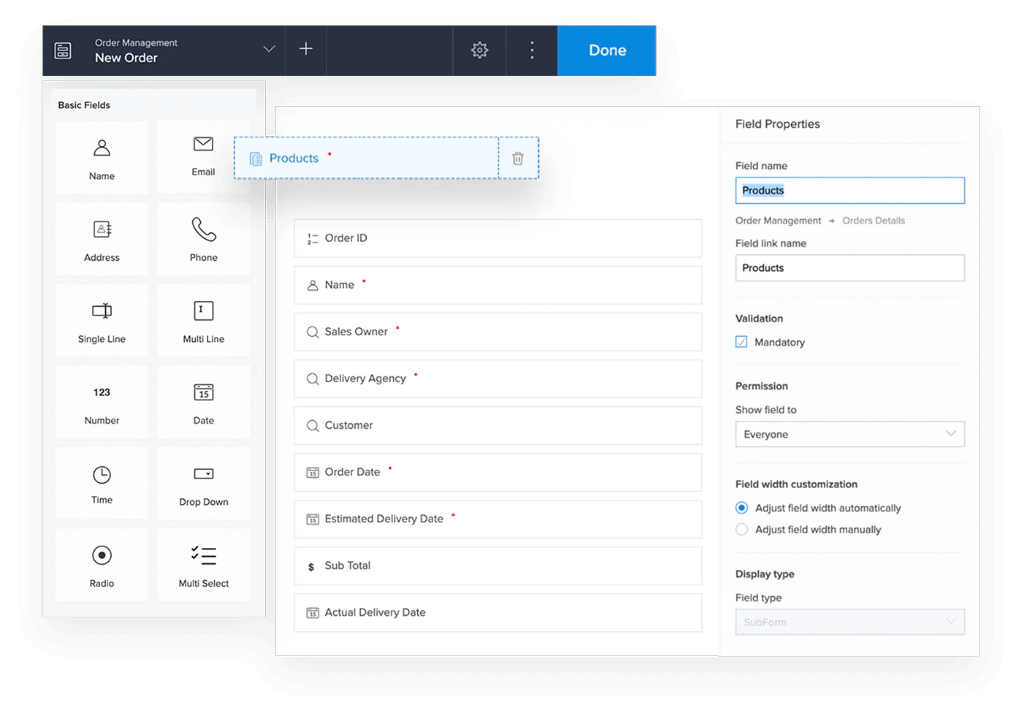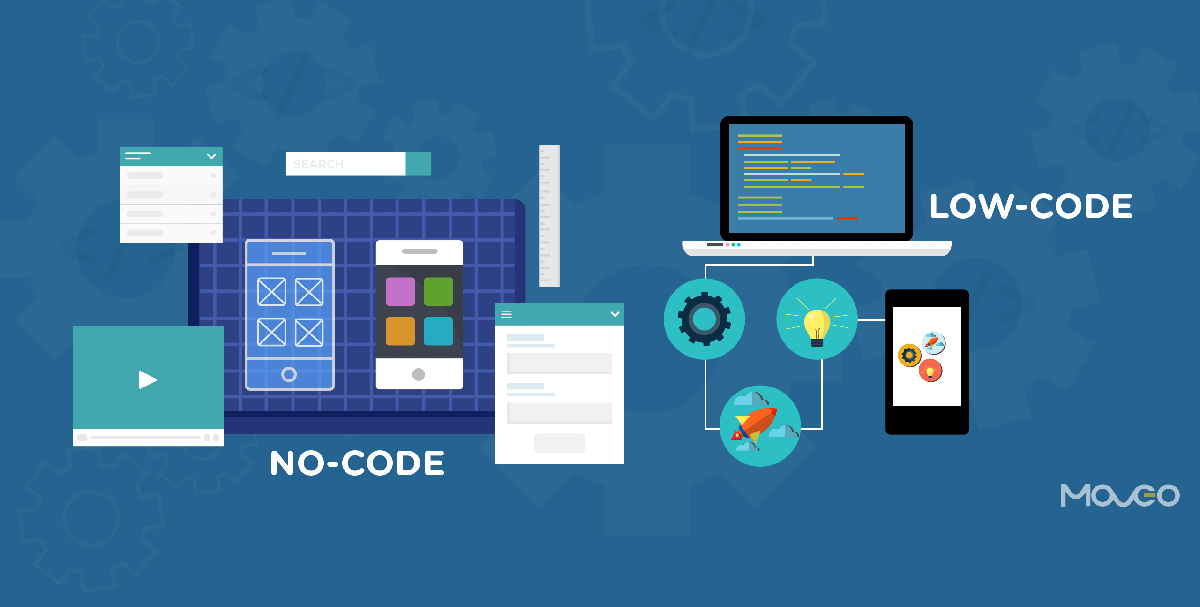Handy Reasons For Choosing Low-Code Platform Recommendations
Handy Reasons For Choosing Low-Code Platform Recommendations
Blog Article
Benefits Of Low Code Application Development In Relation To Integration Capabilities
Low-code app development has many advantages, particularly in terms of integration. This is essential in creating apps that seamlessly connect to systems and other services. These are the advantages of APIs and connectors that are pre-built:
A Wide Variety of Connectors. Low-code software typically includes an array of built-in connections to business systems that are well-known (e.g. cloud services, databases and CRM). This makes it easier for integrating with these systems.
API Integration: Many Low-Code platforms come with out-of-box API integration tools that let developers effortlessly connect external services as well as data resources.
User-Friendliness
Drag-and -Drop integration: Integration tasks are often done using drag and drop interfaces. Developers and non-developers are able to set up sophisticated integrated systems without writing code.
Visual Workflow Builders: Tools to create workflows and data flow which visually represent help understand and set up integrations in a more intuitive manner.
Standardized Integration Methods:
SOAP and restful services: Supporting web service standard protocols such as REST and SOAP allows integration with a many different systems and applications.
OData Standards and Other Standards The support for standards, including OData provides the easy access of data as well as its manipulation across multiple platforms and applications.
Real-Time Data Synchronization:
Low-code platforms enable real-time integration between systems and applications. This allows data to be consistent and updated throughout the company.
Event-Driven Architect: Certain platforms are equipped with structures that are event driven, allowing applications to respond immediately to any event. This is essential in dynamic interactive applications.
Legacy System Integration:
Low-code platforms offer a variety of tools to connect with existing systems. They allow organizations to modernize IT without overhauling their existing systems.
Data Migration Tools: These built-in tools to migrate data facilitate the transfer of data from older systems to new applications built on low-code platforms.
Integration of third-party services:
Cloud Services: Seamless Integration with Cloud Services such as AWS Azure Google Cloud and Google Cloud allows for easy deployment of applications.
Business Applications Integration : The low-code platform is able to integrate with a variety of applications for business, like Salesforce.com, SAP, Microsoft Dynamics and others to provide a seamless workflow across different business functions.
Simplified Data Processing
Unified Data Models: Some platforms that use low-code provide unified data models that simplifies data integration and management across multiple systems.
Data Connectors are data connectors that have been pre-configured that offer quick access to sources of data, and allow manipulation.
Security and Compliance
Secure Integrations: Low-code platforms ensure that integrations adhere to security protocols and standards, helping to safeguard data while in transit and in storage.
Compliance Features: These platforms often include features to ensure that integrations comply with regulatory requirements (e.g. GDPR, HIPAA), providing peace of mind for businesses dealing with sensitive data.
Extensibility:
Low-code platforms are able to accommodate complex integration needs by including custom scripts or code. They offer flexibility without compromising the ease of use.
Plug-in Ecosystem A collection of extensions and plugins can enhance the integration capabilities that allow users to include new functionalities as needed.
The overall low-code platform's capabilities for integration makes it an effective tool for creating interconnected applications which are scalable and efficient. These platforms facilitate the process of connecting different IT systems, increase the flow of data, and aid businesses to adopt the latest technologies while also leveraging new ones. Check out the top sell for Low-code Platform for application development for blog info including sso azure, software for app development, database in azure, multiplatform mobile app development, paas service, jdbc server, microsoft azure sql, rapid app development, cross platform mobile app development, paas service and more.
Cost-Effectiveness Is Among The Many Benefits Of Creating Applications Using Low-Code.
Low-code application creation offers many advantages when it comes to cost-effectiveness. Businesses looking to optimize budgets can take advantage of this option while delivering quality applications. The main benefits are reduced development costs:
Fewer Coding Requirements: Low code platforms eliminate the need for extensive, hand-coded applications. Developers are able to spend less time and effort creating applications. Also, it means less labor cost.
Reduced Developer Resources: Because low-code is faster and simpler to develop, fewer specialized developers will be required. Costs for hiring and staffing can be reduced significantly.
Faster time to market
Accelerated Development: Low-code platforms offer visually-based development tools, components that are pre-built and other capabilities that facilitate rapid development of applications. Companies can launch their products on the market faster. This can result in quicker revenues and better standing in the market.
Rapid Prototyping. Through the rapid creation and testing prototypes, businesses can reduce time spent on developing and develop faster on feedback from users.
Low Maintenance Costs
Due to their modularity as well as common components, applications developed on low-code platforms tend to be easier to maintain. This helps reduce the cost of ongoing maintenance.
Automated Updates. Many low-code platforms manage patches and updates automatically. Applications remain secure without requiring a lot of manual input.
Efficient Resource Utilization:
Platform contributions that are low-code let businesses as well as other non-developers participate in the creation process. This allows companies to tap into the expertise of a wider range of employees, while reducing dependence on high-paying developers.
Optimized Use of IT Resources: IT departments are able to focus on more strategic initiatives instead of getting bogged down by routine tasks of development which can increase overall efficiency and productivity.
The Scalable Pricing model
Subscription-based Prices: Many lowcode platforms offer flexible, subscription-based pricing plans that rise in line with usage. This lets businesses be able to align their spending with the actual demands and growth, while avoiding huge initial costs.
Pay-Asss-You-Go Option: Some platforms have pay-ass-you go options that make sure companies only pay when they use resources. This is particularly helpful for startups and smaller companies with small budgets.
Reduced Third-Party Costs for Software:
Built-in Functionalities : Low-code software typically comes with built-in functions and integrations, which eliminates the need for extra third-party software, tools and licenses.
Pre-Built Integrations: The availability pre-built integrations with the most well-known systems and services reduces the need for custom development. Time savings as well as cash.
Improved ROI
Increased Return On Investment A combination of rapid development and lower expenses with a faster time to marketing will allow businesses to earn greater return on investment.
Improved agility: Companies can adjust quickly to changes in the market or to customer demands, which allows businesses to remain relevant and benefit from new opportunities.
Train for More for
User-friendly interfaces: Low-code platforms offer user-friendly and intuitive interfaces that cut down on the learning curve. They also minimize the requirement for long-running courses of instruction.
Accessible Resources - Many low code platforms come with comprehensive training materials and tutorials along with community support. These tools reduce the requirement for formal instruction and the associated expenses.
Collaboration can be made easier.
Enhanced Collaboration Tools: Built-in tools for collaboration facilitate better communication and coordination between team members, leading to improved development efficiency and less project overhead.
Unified Development Environment (UDE): An unified, single development environment simplifies workflows, reducing the costs and complexity of managing multiple platforms and tools.
The value of low-code development is due to its ability to reduce development and maintainance costs, speed up the time to market, improve resources, and provide different pricing options. Low-code offers substantial financial advantages to businesses. Read the top Enterprise application development with Low-code Platform hints for more advice including stored sql procedures, rapid application design, mobile development platforms, mobile development platforms, database in azure, app modernisation, multiplatform mobile app development, rapid applications, mobile app development platforms, rapid applications and more.
The Advantages Of Low-Code Development For The Development Of Applications In Terms Of The Limitations And Customization
Low-code applications offer a balanced approach that provides important advantages in terms of addressing limitations and allowing for modification. These are the main advantages: Managing limitations
: .
Low-code platforms make development easier by providing templates that are pre-built and other components. This allows for quicker deployment and development of complex applications.
A lot of platforms offer automated workflows that help developers navigate their way through the complex procedures. They reduce the chance of errors and ensure consistency.
Scalability Solutions
Built-in Scalability: Low-code platforms include many options that enable the design of scalable architecture, which allows applications to cope with increased load without significant redevelopment.
Performance Monitoring Performance Monitoring Tools: Integrated performance monitoring tools and optimization tools ensure that applications are as efficient as they can be, regardless of their size.
Security and Compliance
Low-code platforms are equipped with security functions like role-based security access control, encryption, and automated checks to ensure compliance. These features address common concerns about security.
Platforms are continuously changing their security procedures as well as measures of compliance, which ensures that applications are safe from emerging threats.
Features of Customization:
Extensibility:
Custom Code Integration: Low-code systems usually allow the integration of custom codes (e.g., JavaScript, Python), enabling developers to enhance the functionality beyond what is available in the standard features.
Customized plugins and modules Developers can design custom modules or plugins to provide specific features that are adapted to the specific requirements of a particular business.
APIs and integration
API Support: Comprehensive APIs support is provided to allow seamless integration and connectivity with external systems.
Third-Party Services: Low-code platforms often provide pre-built connectors for well-known third-party services, which makes it easier to integrate and customize applications.
Flexible Design for UI/UX:
Flexible User Interfaces for Developers: Designers have the ability to alter and create user interfaces that meet specific branding and usability requirements, providing a tailored user experience.
Responsive Design: The apps can be adapted to fit various screen sizes and devices.
Business Logic Customization:
Visual Workflow builders: These tools allow developers create complex processes with little or no programming. They can create business processes and workflows using visual.
Conditional Logic and scripting: Platforms allow the use of conditional logic as well as custom scripting that can handle certain business rules and situations.
Data Management:
Custom Data Models: Developers are able to define custom data models to suit specific application needs to ensure that data processing is tailored to business requirements.
Advanced Data Processing: Integration of advanced tools and capabilities to process data permits customizations to the way data is processed within an application.
Balance Customization and Limitations:
Frameworks and Standards
Low-code platforms are compliant with the industry standard and best practices. This allows for the highest quality and security of applications.
Governance Frameworks. The built-in governance frameworks ensure that customizations will not compromise security, compliance or the integrity of the software.
Feedback and Iterative Design
Rapid Prototyping: The capacity to quickly prototype and test customizations ensures that developers can modify their designs based on feedback from users, refining the application to better meet user needs.
Continuous Improvement: Low code platforms allow for continuous improvements. They are able to be customized and enhanced when business requirements change.
User Empowerment
Low-code platforms allow citizen developers to develop through letting non-developers with intuitive interfaces, to personalize applications, they expand the pool contributors that can enhance and tailor apps.
Support and Training: A lot of platforms have extensive resources for assistance and training to help users with making efficient customizations, without compromising application stability or performance.
In general, low-code development offers a robust framework to overcome limitations and offers a wide range of possibilities to customize. This balance ensures businesses can develop and maintain applications that are both tailored and functional to meet their specific requirements, while maintaining high standards of quality, safety and scaling.